IQUB mutation induces radial spoke 1 deficiency causing asthenozoospermia with normal sperm morphology in humans and mice
- PMID: 39849482
- PMCID: PMC11755891
- DOI: 10.1186/s12964-025-02043-z
IQUB mutation induces radial spoke 1 deficiency causing asthenozoospermia with normal sperm morphology in humans and mice
Abstract
Background: Asthenozoospermia (ASZ) accounts for about 20-40% of male infertility, and genetic factors, contributing to 30-40% of the causes of ASZ, still need further exploration. Radial spokes (RSs), a T-shaped macromolecular complex, connect the peripheral doublet microtubules (DMTs) to a central pair (CP), forming a CP-RS-DMT structure to regulate the beat frequency and amplitude of sperm flagella. To date, many components of RSs and their functions in human sperm flagella remain unclear.
Methods: We recruited a cohort of 323 infertile males with ASZ between August 2019 and June 2024. Genetic mutations were identified by whole-exome sequencing. Computer-aided sperm analysis, Papanicolaou staining, and electron microscopy were applied to evaluate the motility, morphology, and ultrastructure of spermatozoa, respectively. Protein mass spectrometry, western blotting, and bioinformatic analyses were performed to identify critical components of mammalian RS1 to model its structure and explore the pathological mechanism of IQUB deficiency. Intracytoplasmic sperm injection (ICSI) was applied for the patient and Iqub-/- mice.
Results: We identified a novel homozygous IQUB mutation [c.842del (p.L281Pfs*28)] in an ASZ male with normal sperm morphology (ANM), which resulted in the complete loss of IQUB in sperm flagella. Deficiency of RS1, but not RS2 or RS3, was observed in both IQUB842del patient and Iqub-/- mice, and resulted in the reduction of sperm kinetic parameters, indicating the critical role of IQUB in regulating mammalian RS1 assembly and sperm flagellar beat. More importantly, we identified twelve critical components of RS1 in humans and mice, among which RSPH3, RSPH6A, RSPH9 and DYDC1 constituting the head, DYDC1, NME5, DNAJB13 and PPIL6 assembling into the head-neck complex, AK8, ROPN1L, RSPH14, DYNLL1, and IQUB forming the stalk of RS1. Along with the RS1 defect, the IQUB deficiency caused significant down-regulation of the inner dynein arms of DNAH7 and DNAH12, highlighting their nearby location with RS1. Finally, ICSI can effectively resolve the male infertility caused by IQUB genetic defects.
Conclusions: We demonstrate that IQUB may serve as an adapter for sperm flagellar RS1 in both humans and mice and consolidated the causal relationship between IQUB genetic mutations and ANM, further enriching the genetic spectrum of male infertility.
Keywords: Assisted reproductive technology; Asthenozoospermia; IQUB; Male infertility; Radial spoke.
© 2025. The Author(s).
Conflict of interest statement
Declarations. Ethics approval and consent to participate: The ethical approval (No.: (2023) Ethics Review (Research) 030) was obtained from the Ethics Committee of Chongqing Health Center for Women and Children. An informed consent form was signed before the collection of peripheral blood and semen. The animal experiments were approved by the Experimental Animal Management and Ethics Committee of Chongqing Health Center for Women and Children (No.: 2023028). Consent for publication: All authors have read and agreed with the submission of the manuscript. This manuscript has not been published or presented elsewhere in part or in entirety. Competing interests: The authors declare no competing interests.
Figures
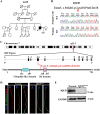
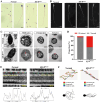
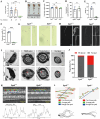
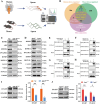
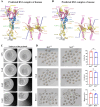

Similar articles
-
IQUB deficiency causes male infertility by affecting the activity of p-ERK1/2/RSPH3.Hum Reprod. 2023 Jan 5;38(1):168-179. doi: 10.1093/humrep/deac244. Hum Reprod. 2023. PMID: 36355624
-
Differential requirements of IQUB for the assembly of radial spoke 1 and the motility of mouse cilia and flagella.Cell Rep. 2022 Nov 22;41(8):111683. doi: 10.1016/j.celrep.2022.111683. Cell Rep. 2022. PMID: 36417862
-
A novel homozygous LRRC6 mutation causes male infertility with asthenozoospermia and primary ciliary dyskinesia in humans.Andrology. 2025 Mar;13(3):459-472. doi: 10.1111/andr.13685. Epub 2024 Jun 27. Andrology. 2025. PMID: 38934611
-
A novel variant in CFAP69 causes asthenoteratozoospermia with treatable ART outcomes and a literature review.J Assist Reprod Genet. 2023 Sep;40(9):2175-2184. doi: 10.1007/s10815-023-02873-1. Epub 2023 Jul 1. J Assist Reprod Genet. 2023. PMID: 37392306 Free PMC article. Review.
-
Novel mutations in DNAH17 cause sperm flagellum defects and their influence on ICSI outcome.J Assist Reprod Genet. 2023 Oct;40(10):2485-2492. doi: 10.1007/s10815-023-02897-7. Epub 2023 Aug 14. J Assist Reprod Genet. 2023. PMID: 37574497 Free PMC article. Review.
References
-
- Infertility prevalenceestimates. 1990–2021. Geneva: World Health Organization; 2023. https://www.who.int/publications/i/item/978920068315.
-
- Qiao J, Wang Y, Li X, Jiang F, Zhang Y, Ma J, et al. A Lancet Commission on 70 years of women’s reproductive, maternal, newborn, child, and adolescent health in China. Lancet. 2021;397:2497–536. - PubMed
-
- Eisenberg ML, Esteves SC, Lamb DJ, Hotaling JM, Giwercman A, Hwang K, et al. Male infertility. Nat Rev Dis Primers. 2023;9:49. - PubMed
-
- Agarwal A, Baskaran S, Parekh N, Cho C-L, Henkel R, Vij S, et al. Male infertility. Lancet. 2021;397:319–33. - PubMed
MeSH terms
Grants and funding
LinkOut - more resources
Full Text Sources
Molecular Biology Databases
Miscellaneous

